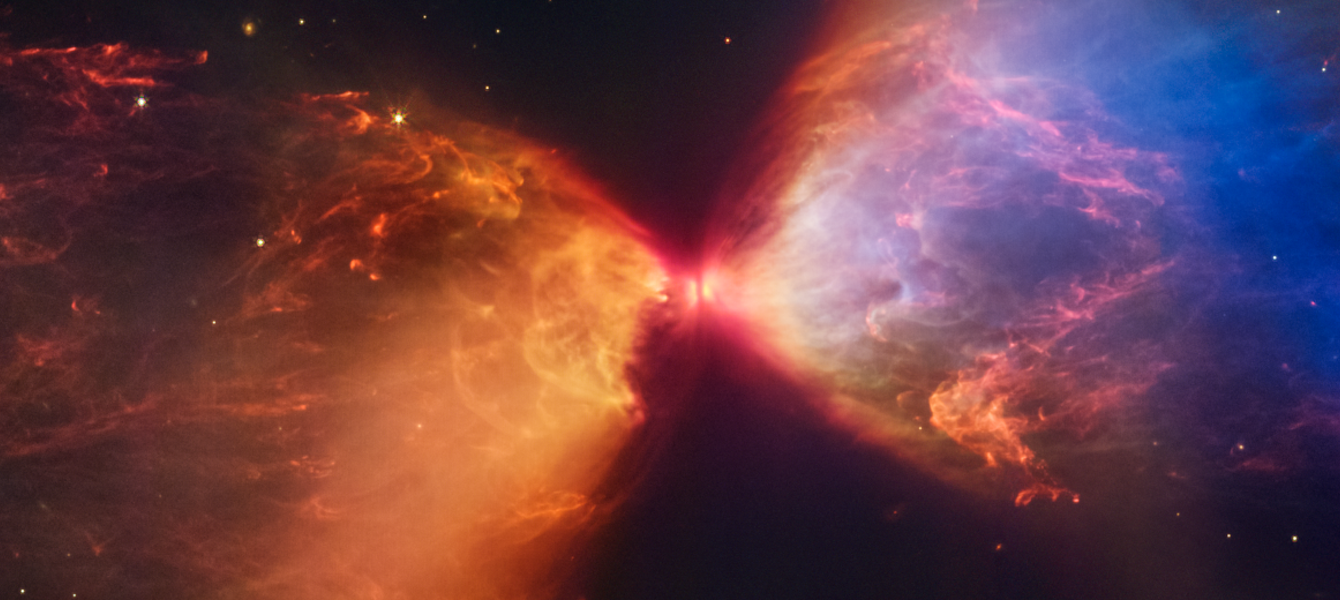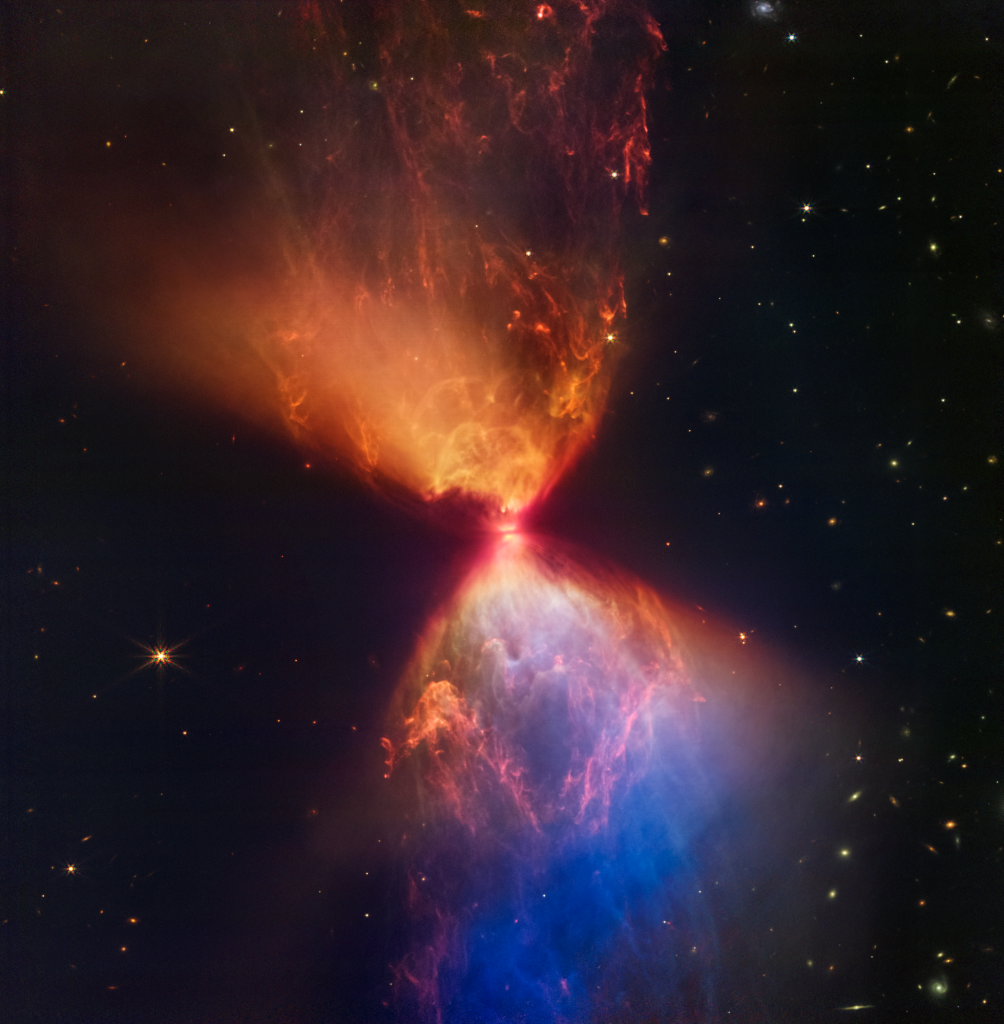
NASA’s James Webb Space Telescope has released a spectacular new image of a newly forming star about 460 light-years from Earth. The news came just hours after NASA’s successful SLS launch from Cape Canaveral.
Since James Webb uses near-inferred cameras, the telescope can reveal otherwise hidden features that visible light telescopes – such as Hubble – can’t see. The brightly colored hourglass-shaped clouds of dust and particles are only visible in infrared light.
These clouds result from dust and particles shooting away from the spinning protostar, now bottlenecked between the two structures. The blue and orange colors result from layers of accumulating dust that incidentally show the thickness of the hourglass.
“The blue areas are where the dust is thinnest. The thicker the layer of dust, the less blue light can escape, creating pockets of orange,” stated NASA.

According to the press release, the star is also at its earliest formation stage (a class 0 protostar). Despite this, the unstable hot clump of gas is estimated to be about 100,000 years old – a relatively young body in the vast cosmos.
You can view and download the full-resolution image from the Space Telescope Science Institute. See more images and learn more about James Webb Space Telescope here.
FTC: We use income earning auto affiliate links. More.






Comments